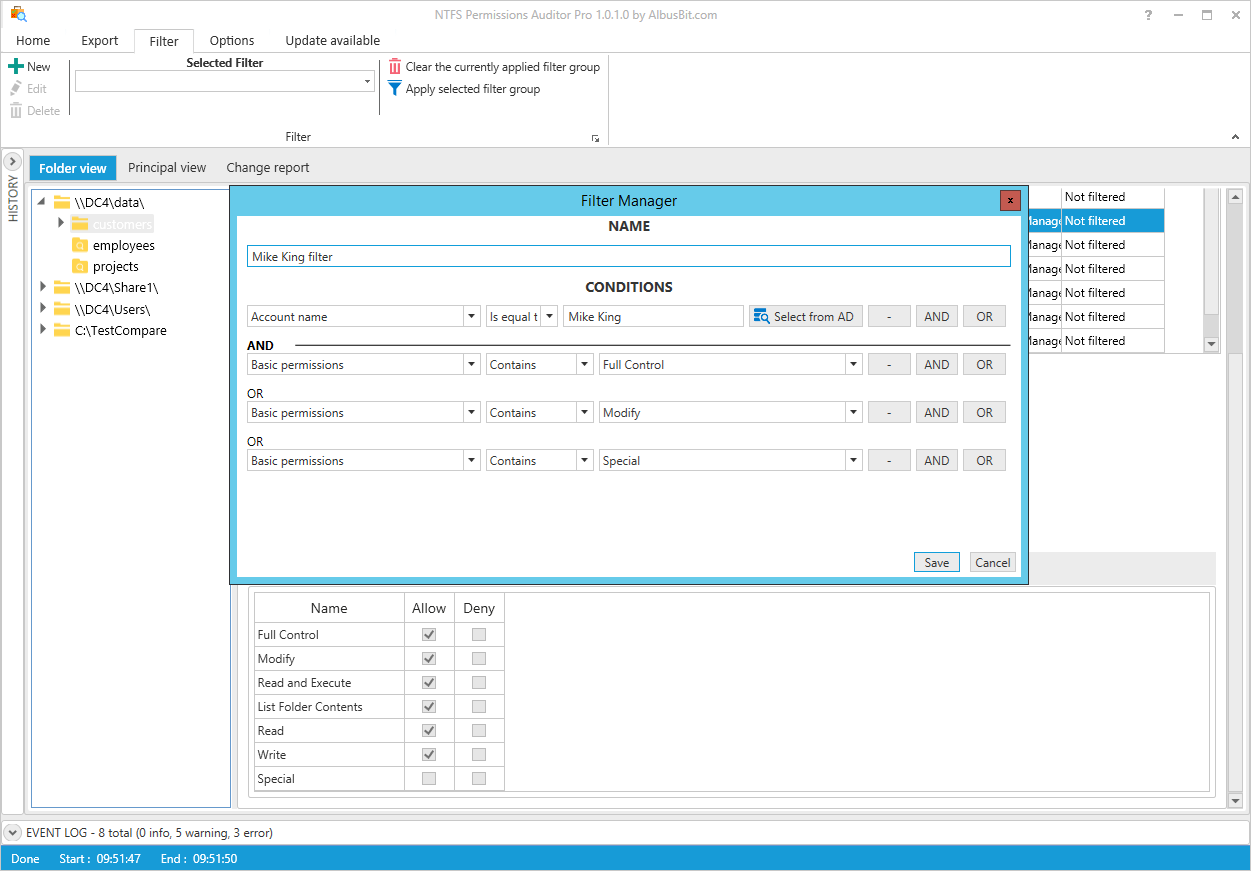
If you don't have a thorough understanding of various permissions and their relationships, it can be difficult to sort out a permission problem when it occurs.įor a more low-level description of NTFS SECURITY_DESCRIPTOR, see metafile $Secure in this guide. Known as the "Security Descriptor", this information controls what kind of access is allowed for individual users and groups of users.Īlong with the additional functionality that NTFS provides comes the potential for complex configurations that can lead to administration headaches. You use shared folders to provide network users with access to file resources.Īdministrators can use the NTFS utility to provide access control for files and folders, containers and objects on the network as a type of system security. If you are an administrator and really need to preserve DACL, SACL, Owner and Group permissions, make sure the FreeFileSync process is running with admin rights. Go to Menu tools options and ensure permission copying is unchecked. Currently support Ubuntu 13.10, Ubuntu 13.04, Ubuntu 12.10, Ubuntu 12.04 and Linux Mint. Copying NTFS permissions is not needed in general and is best left disabled.
#FREEFILESYNC NTFS PERMISSIONS INSTALL#
When it opens, run commands below one by one: sudo add-apt-repository ppa:freefilesync/ffs sudo apt-get update sudo apt-get install freefilesync. Windows 2000 and older introduced some far-reaching changes that included control over inherited permissions and how permissions were configured to share files and folders. Install FreeFileSync in Ubuntu: Press Ctrl+Alt+T on keyboard to open terminal.

NTFS is the standard file system of Windows NT and all Windows operating systems that have come after it. The advantage with NTFS permissions is that they affect local users as well as network users and they are based on the permission granted to each individual user at the Windows logon, regardless of where the user is connecting. NTFS (NT File System) permissions are available to drives formatted with NTFS. On that network, each user can choose to share entire drives or individual folders with the network. In any Windows network, you can set sharing permissions for drives and folders.


 0 kommentar(er)
0 kommentar(er)
